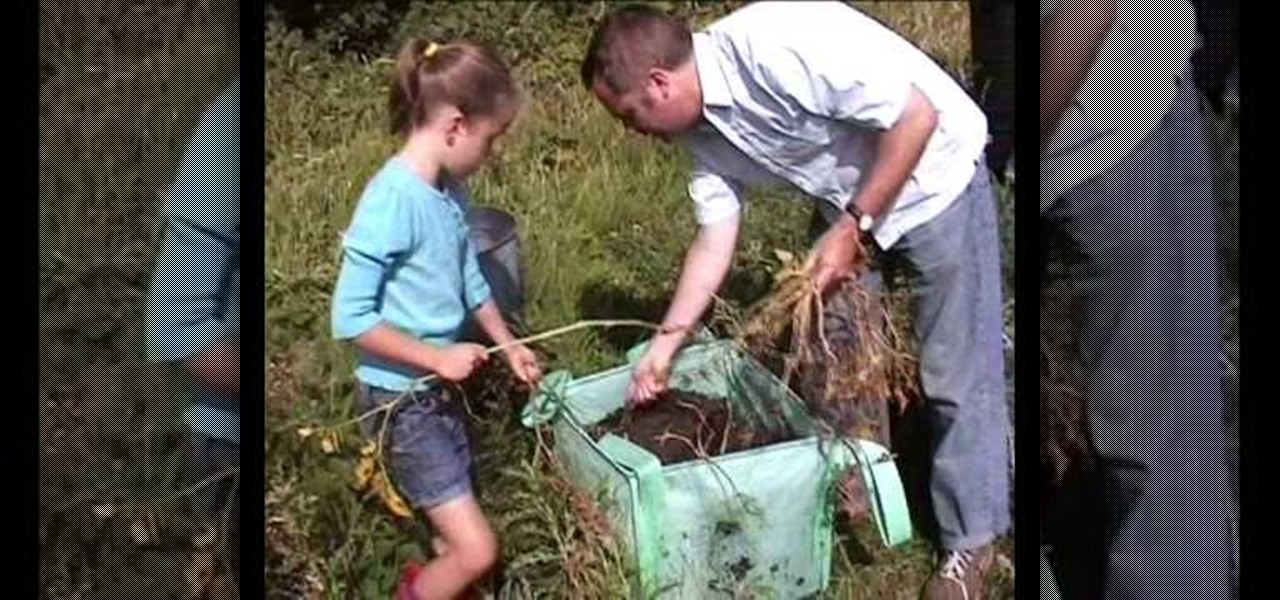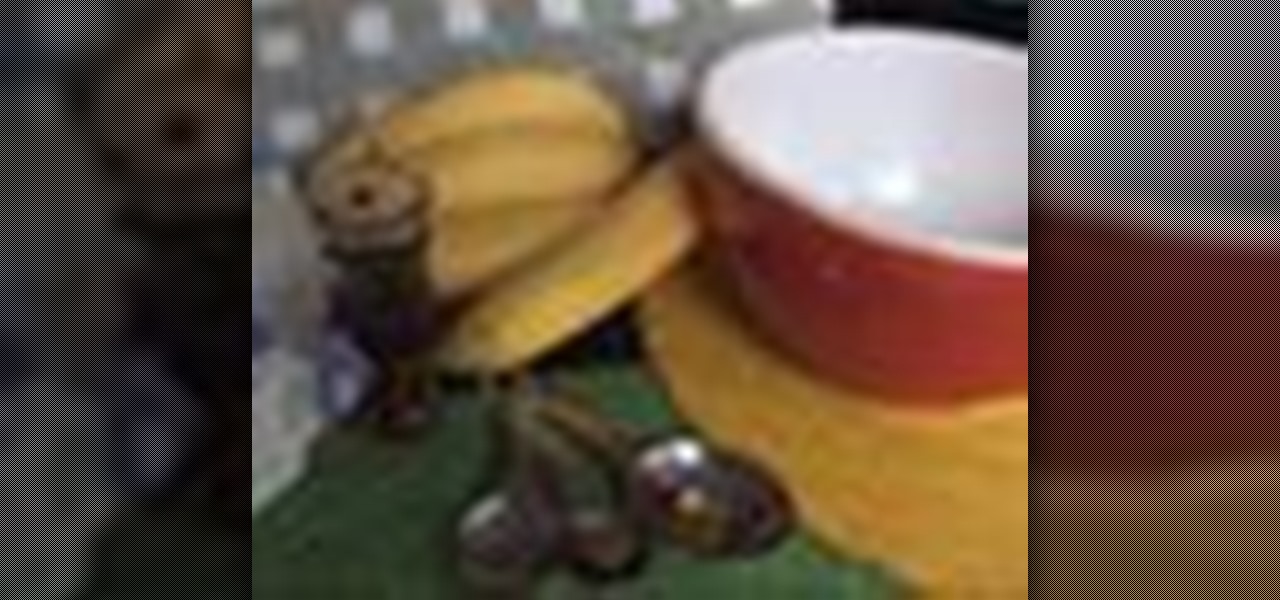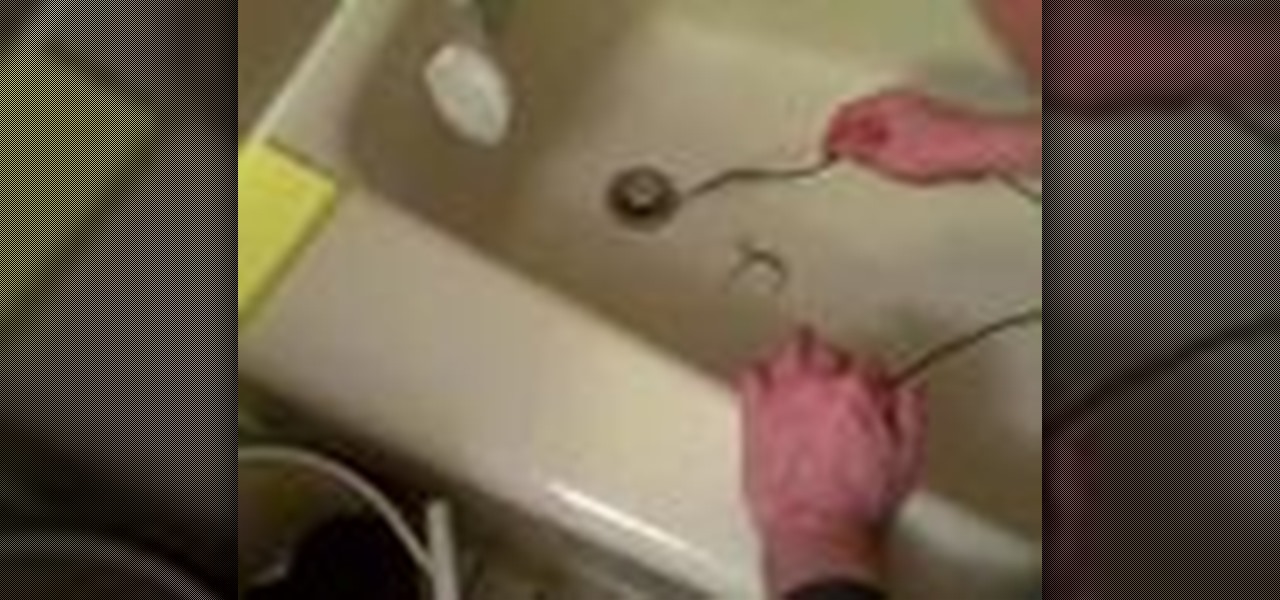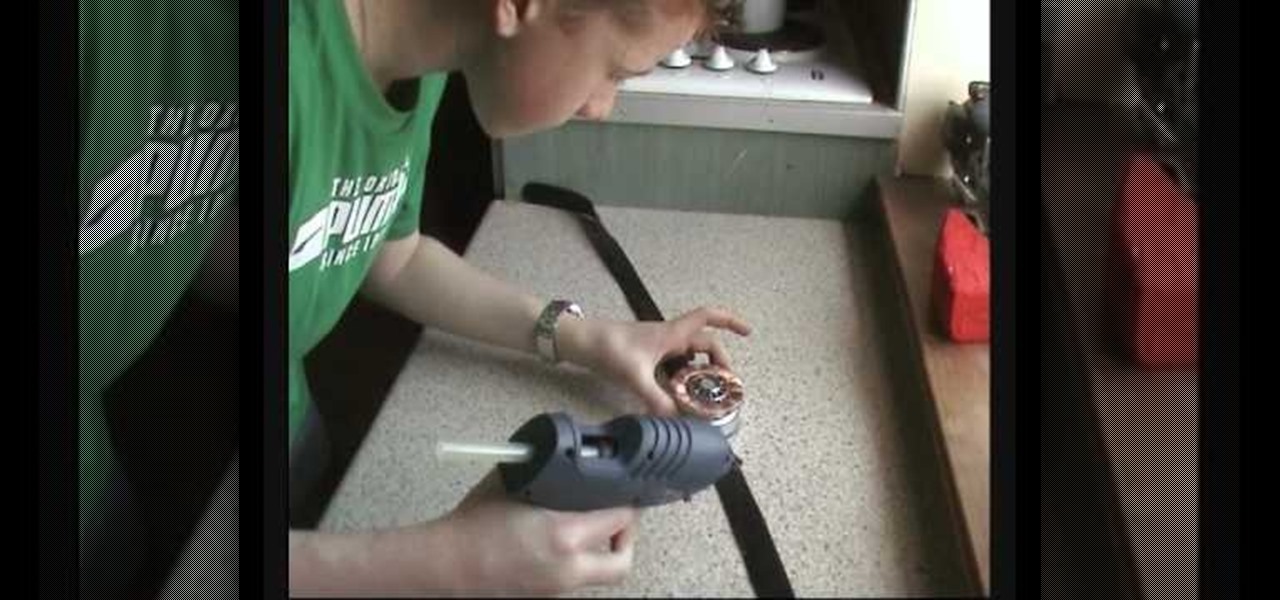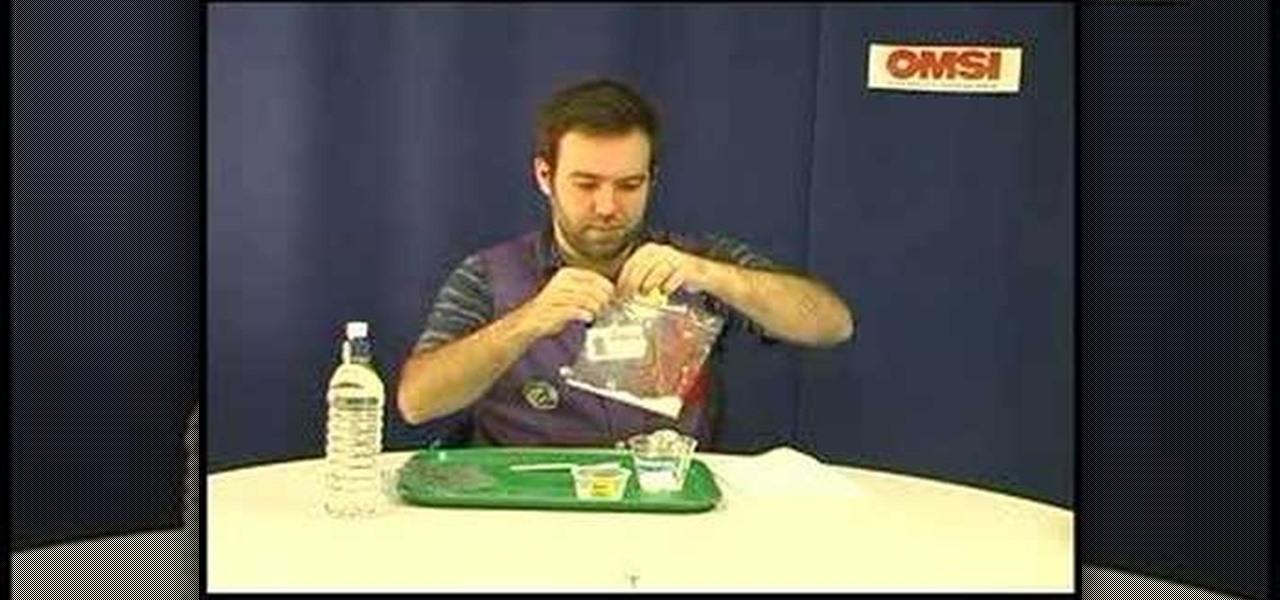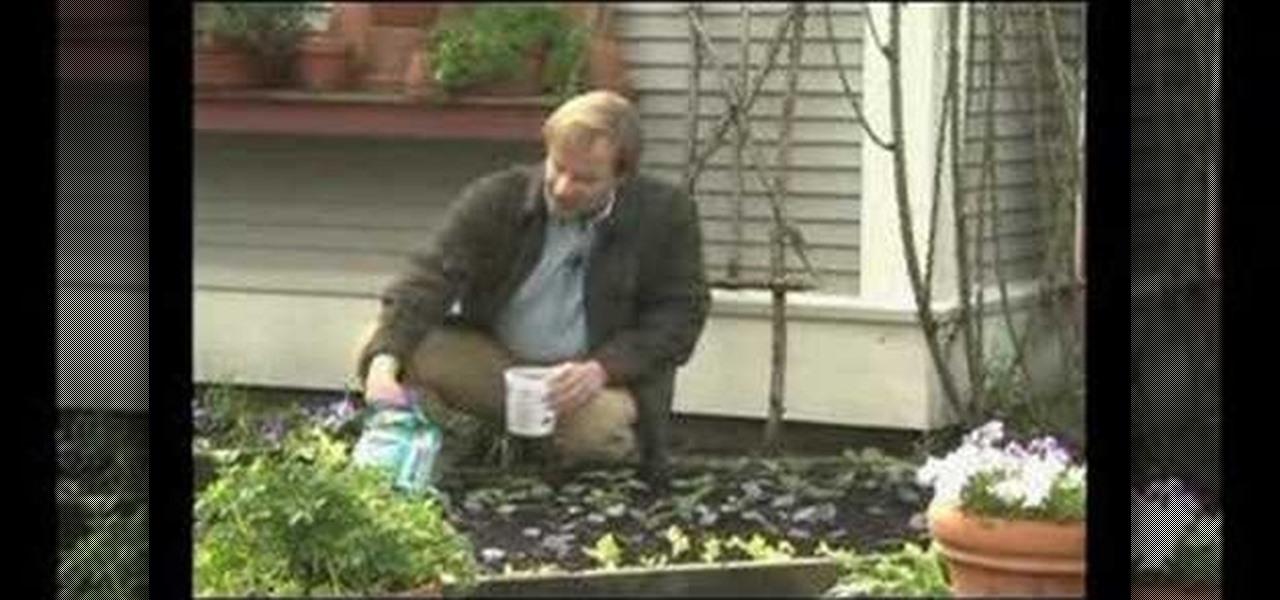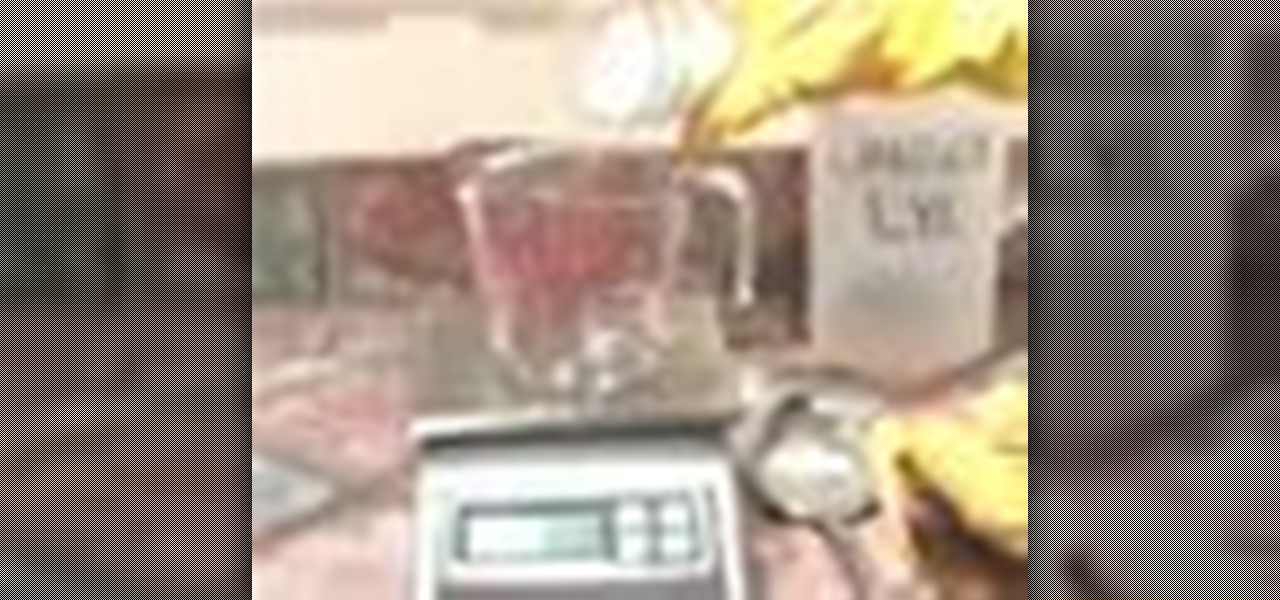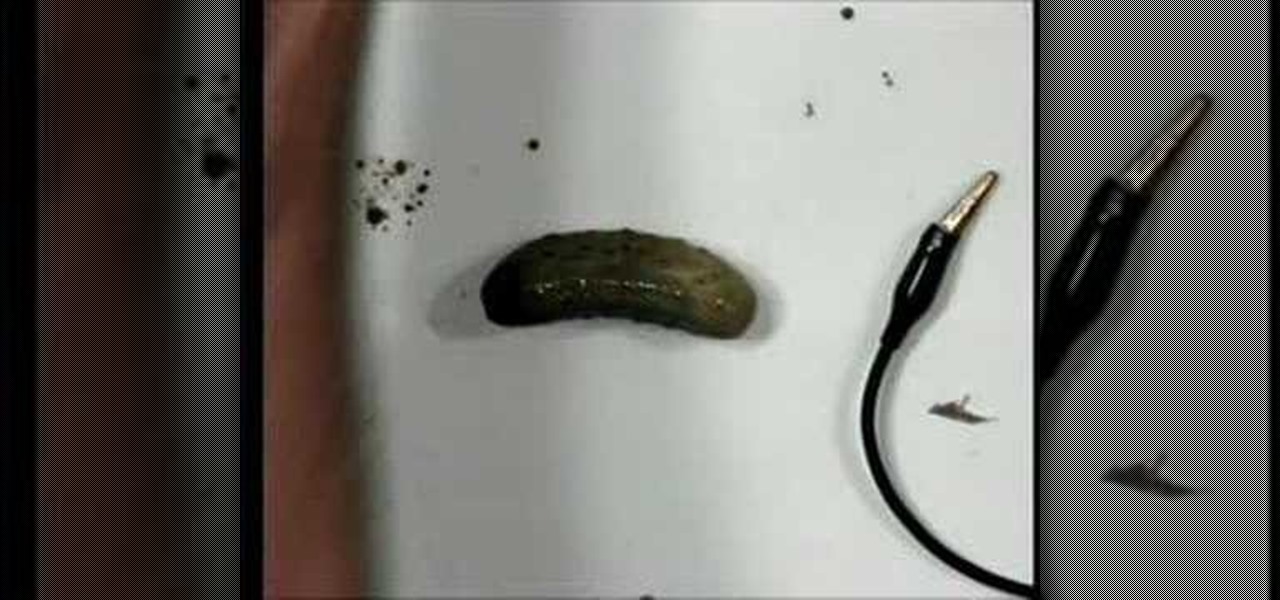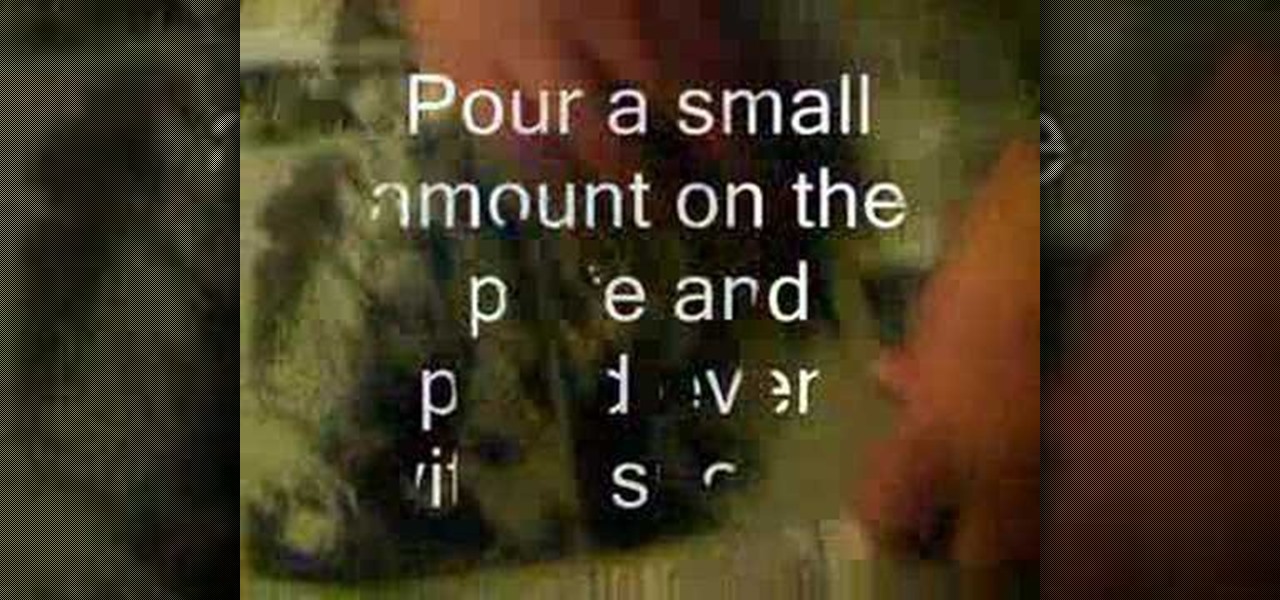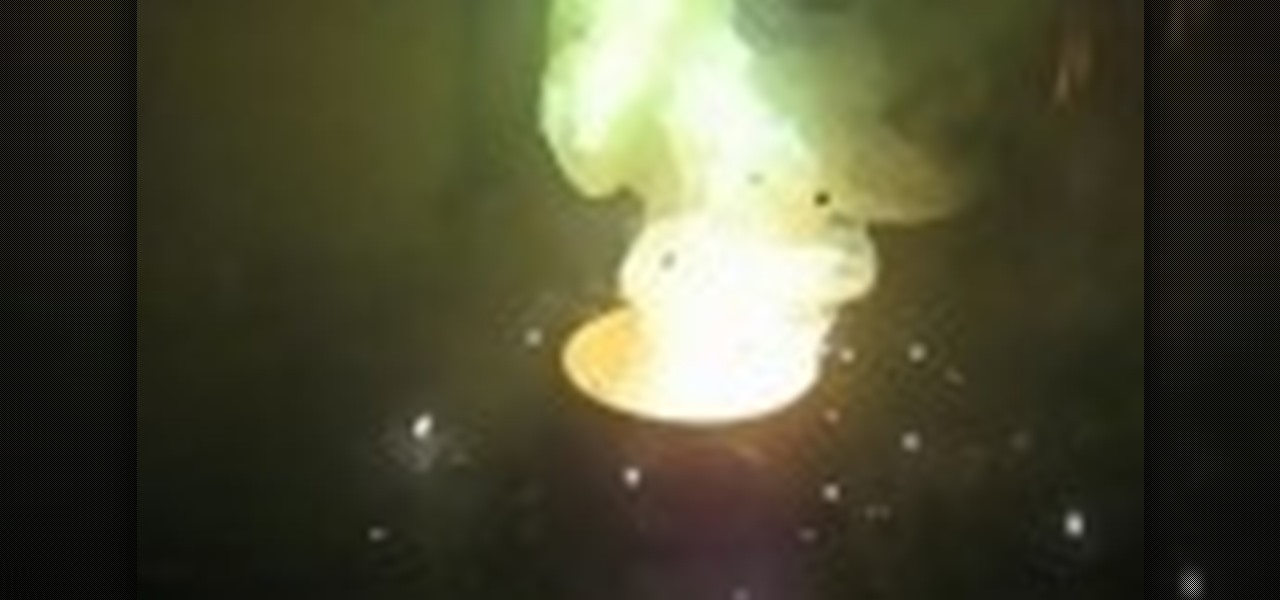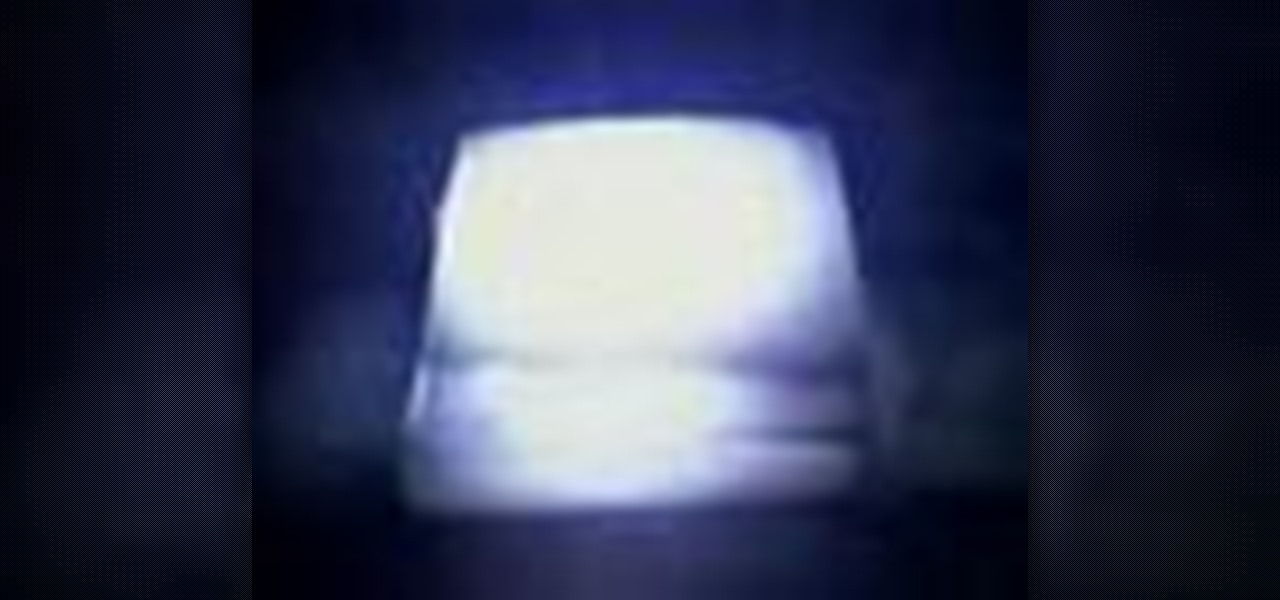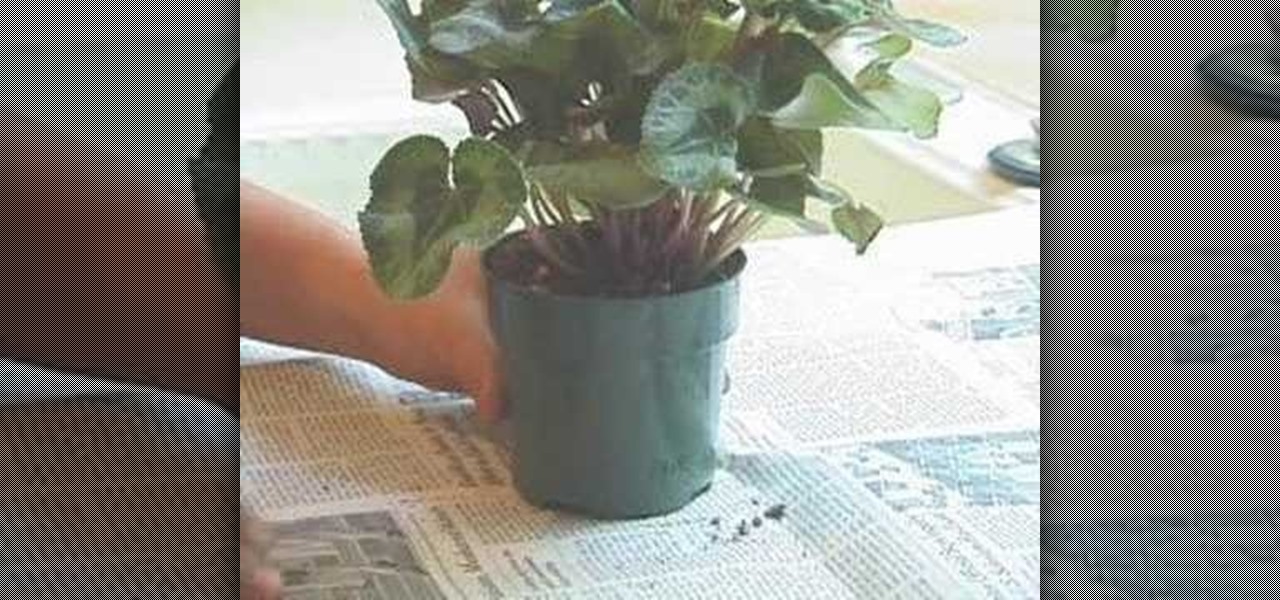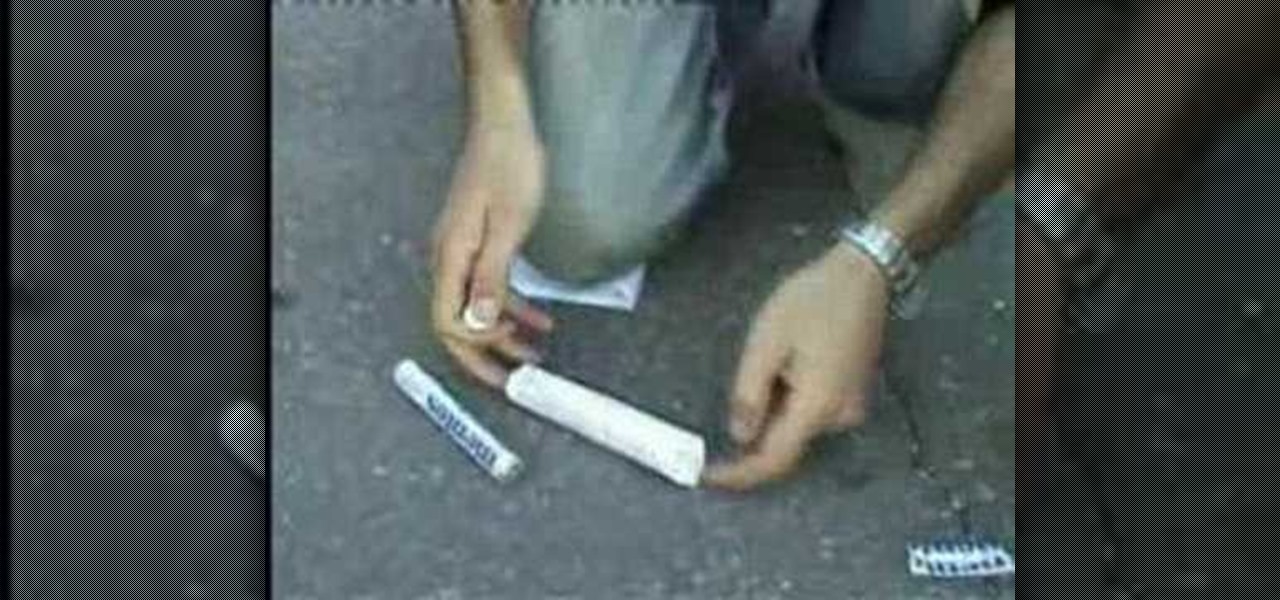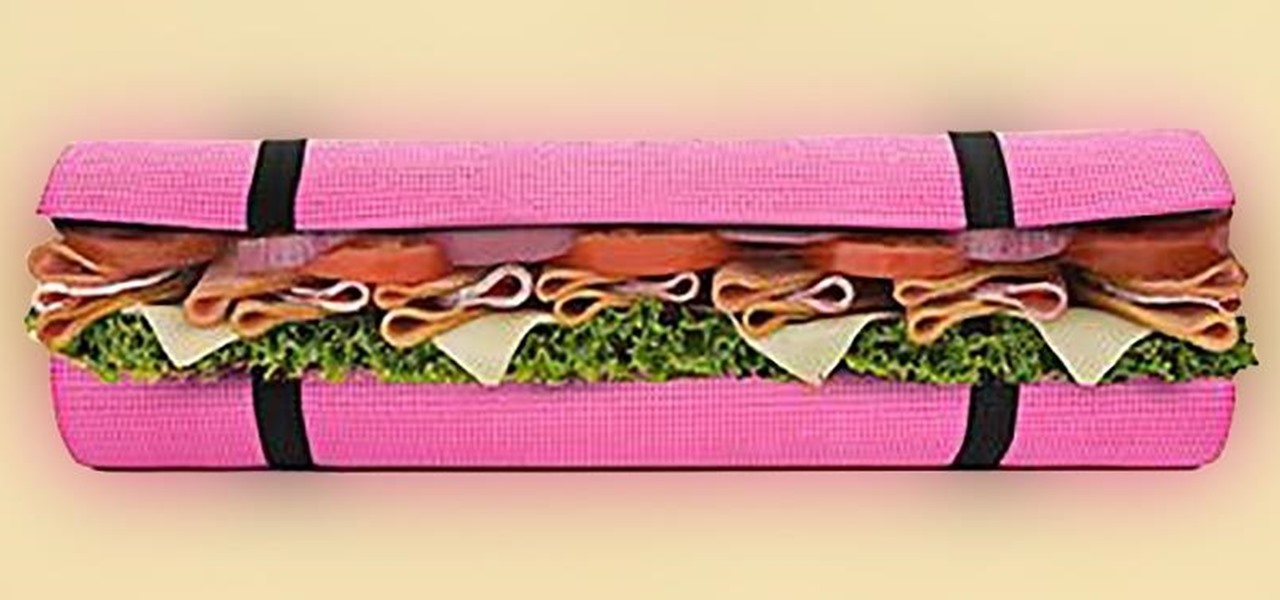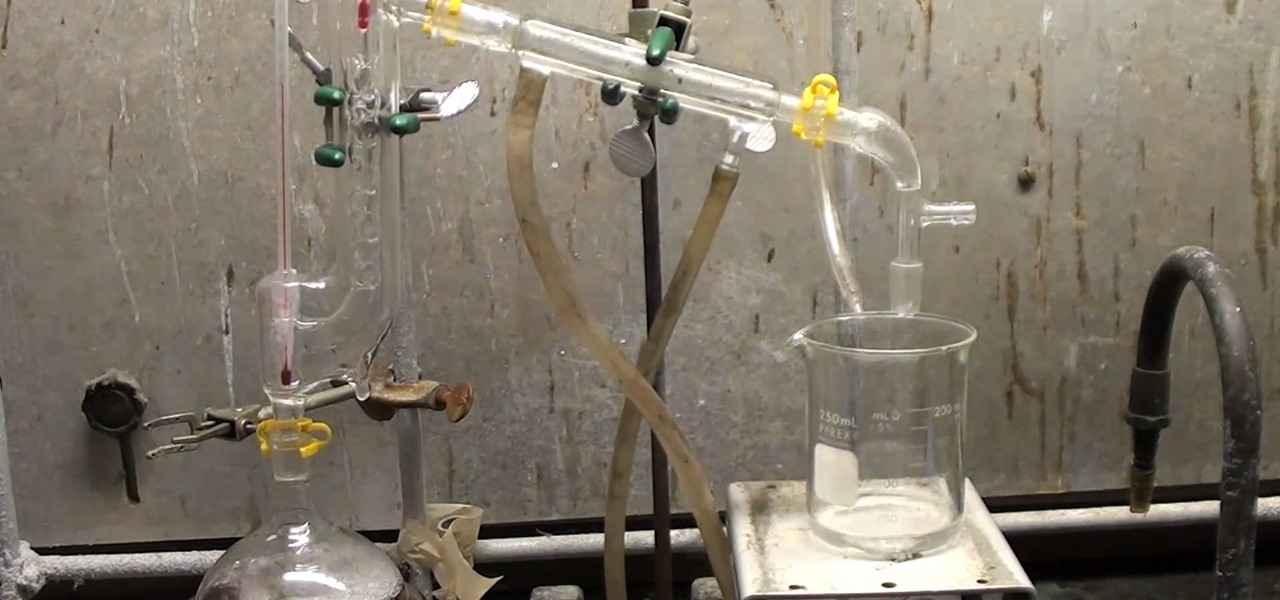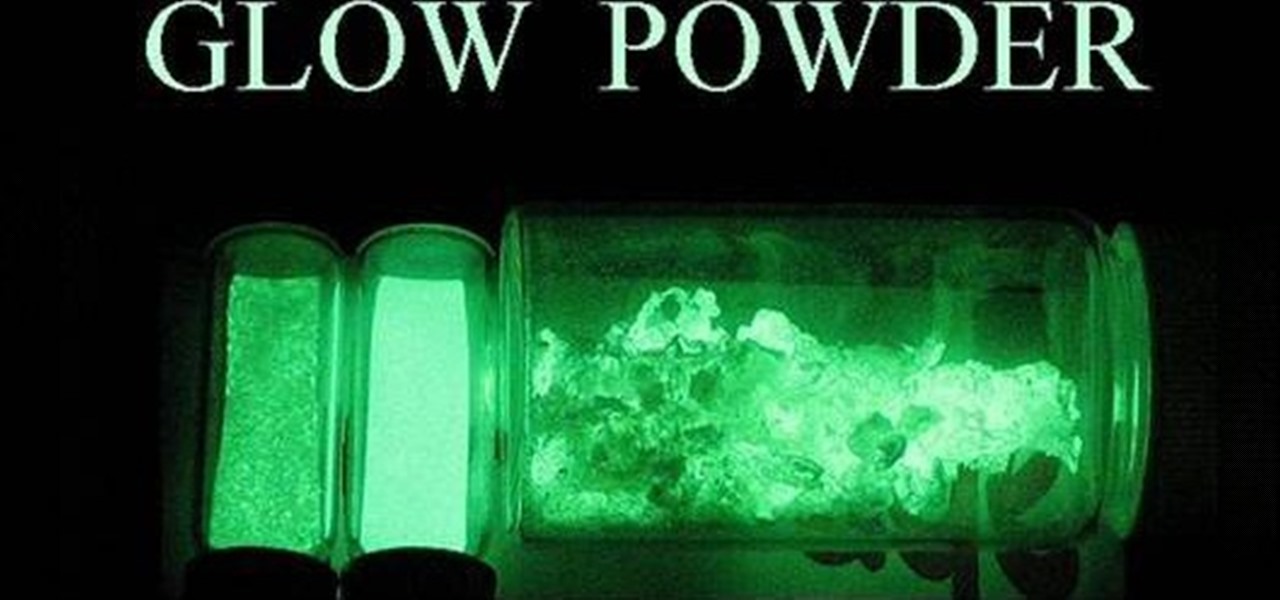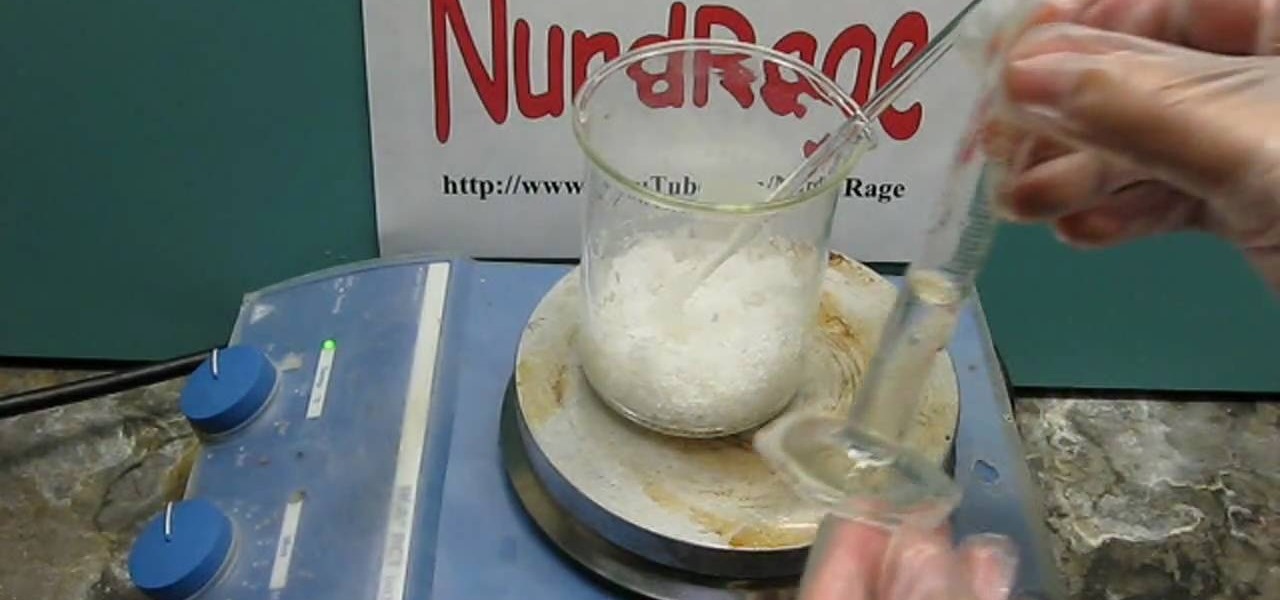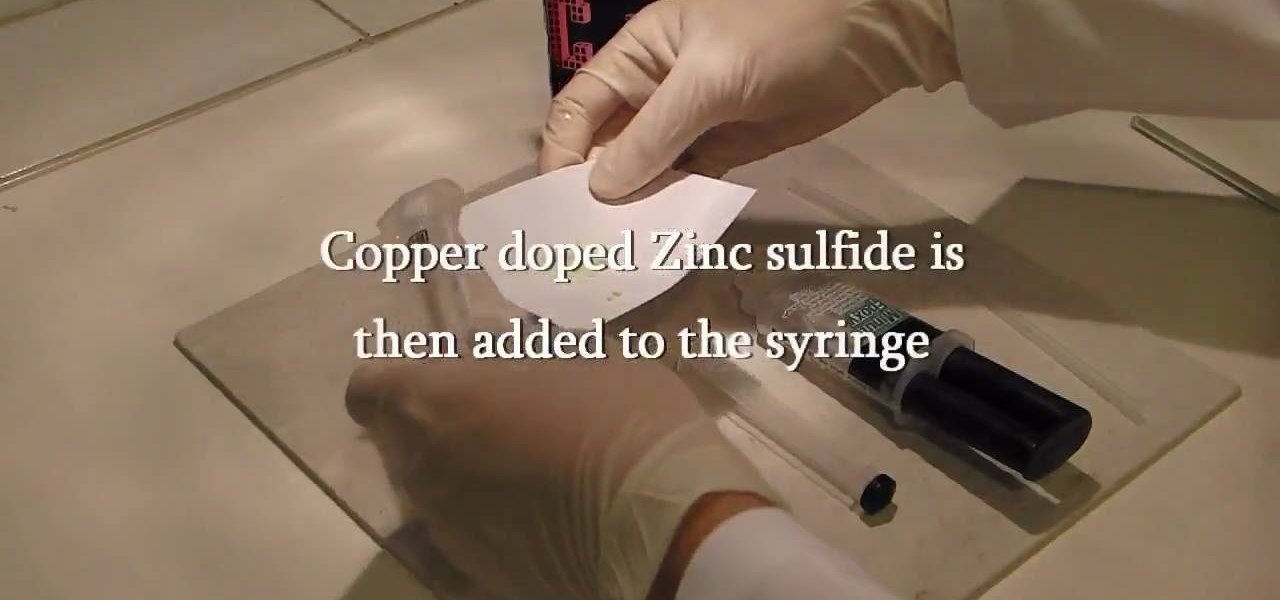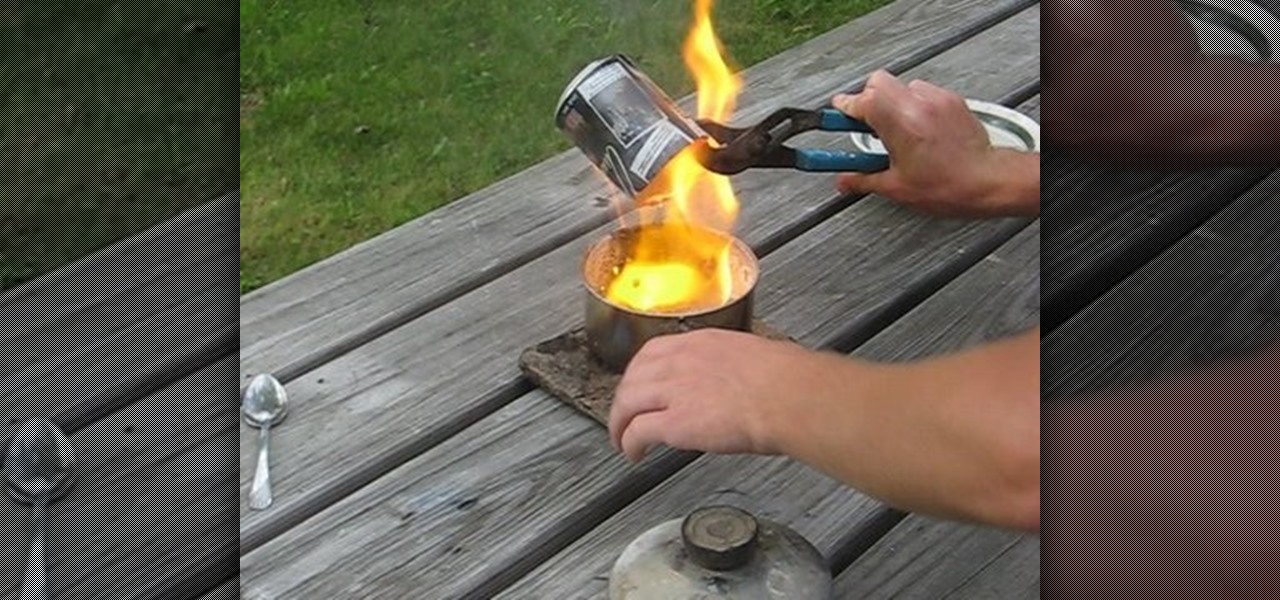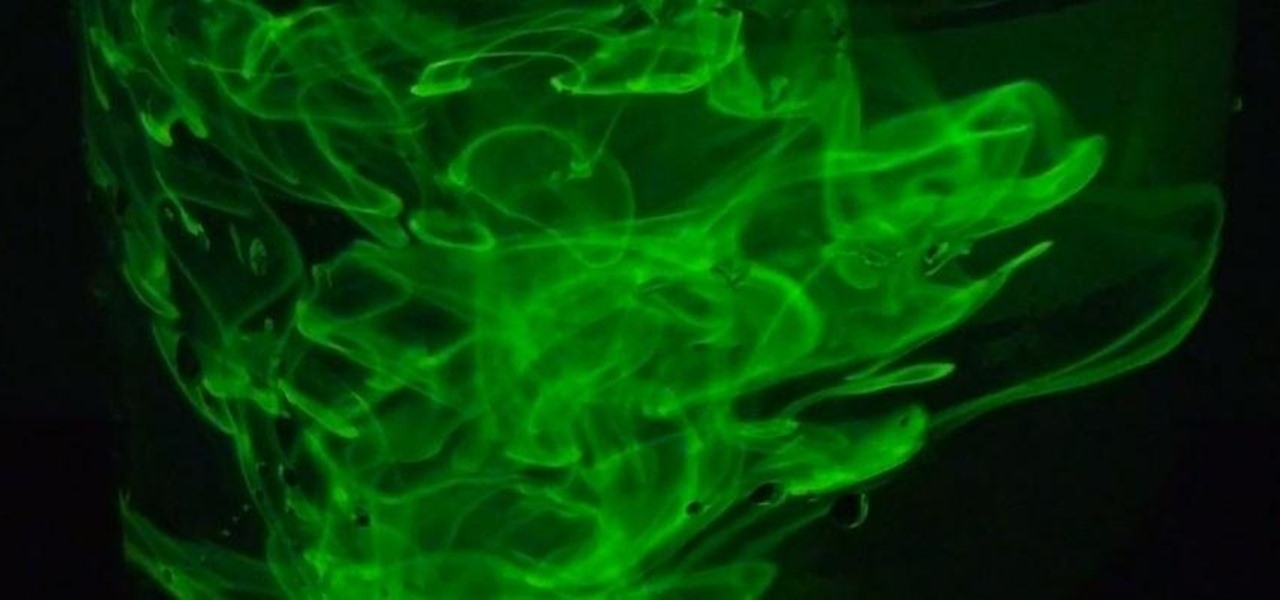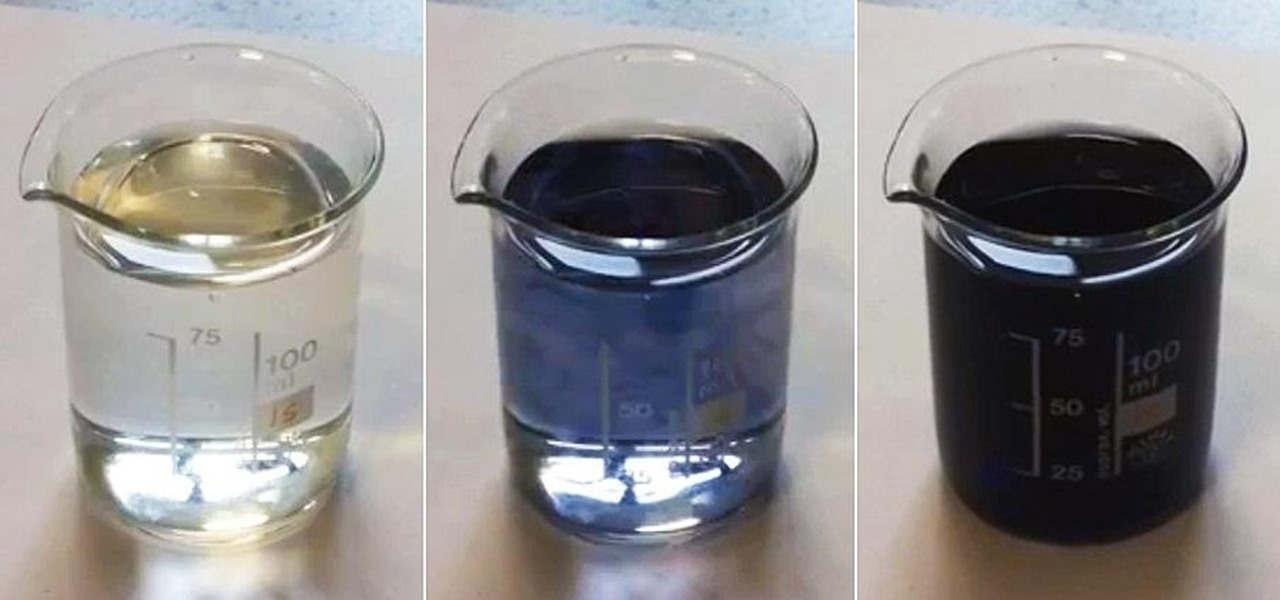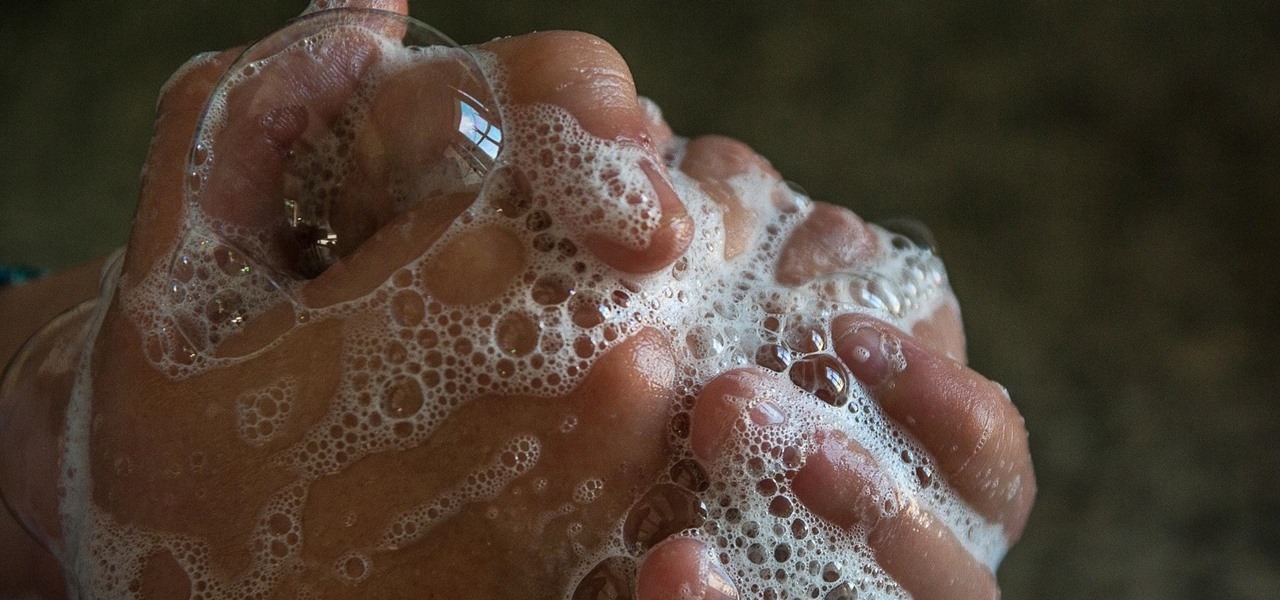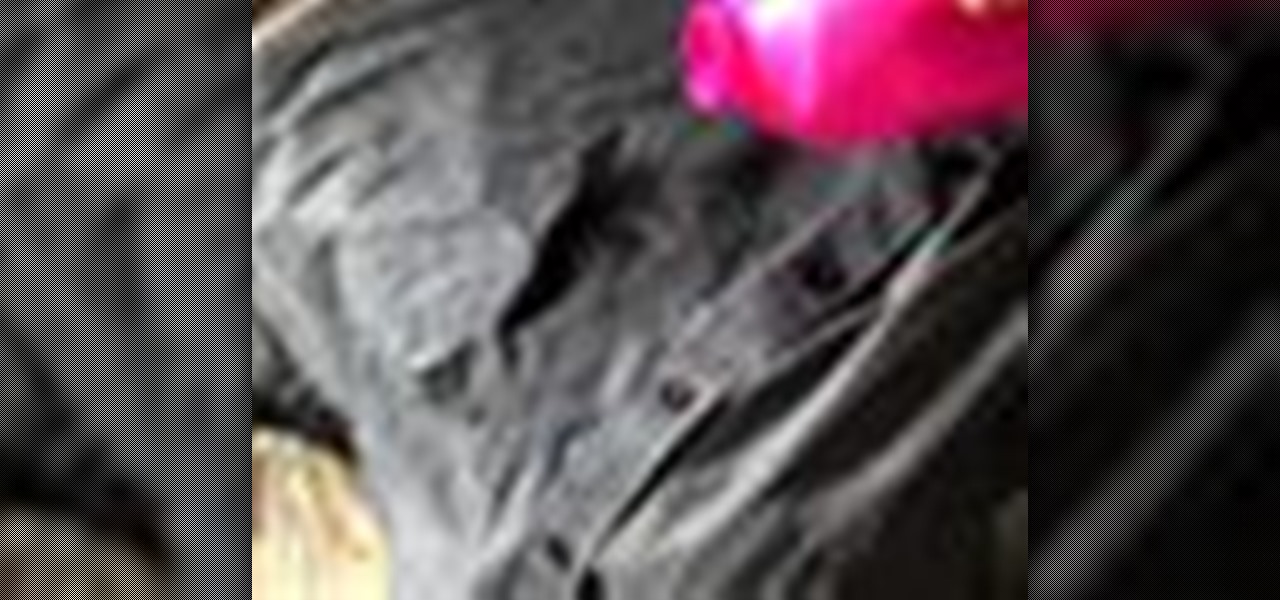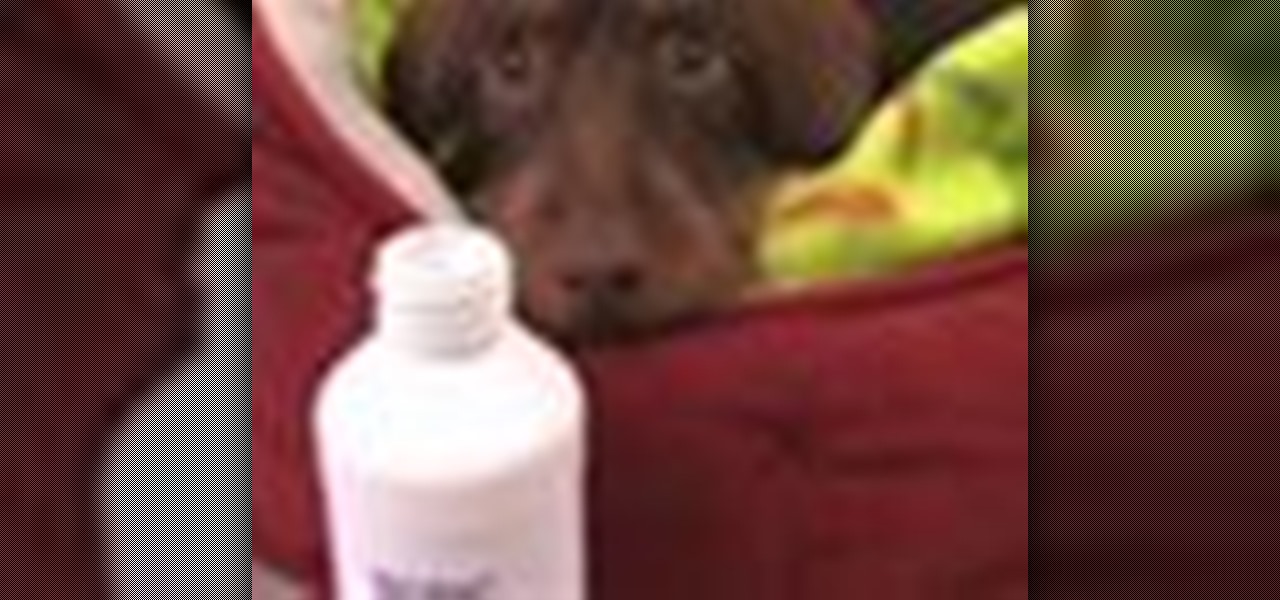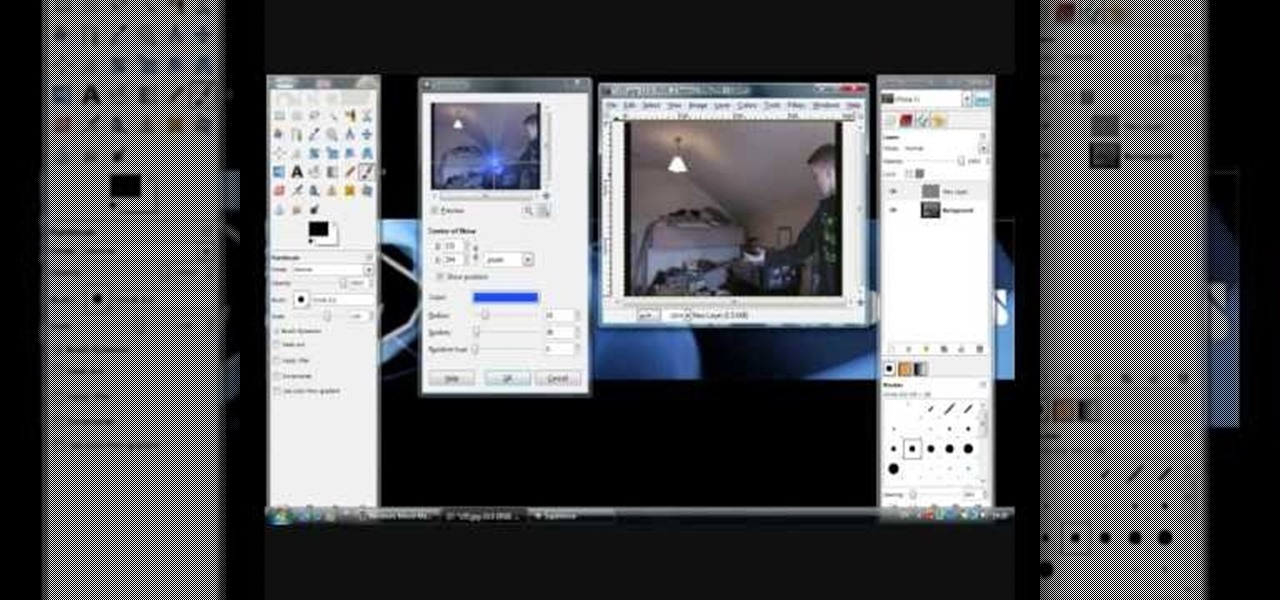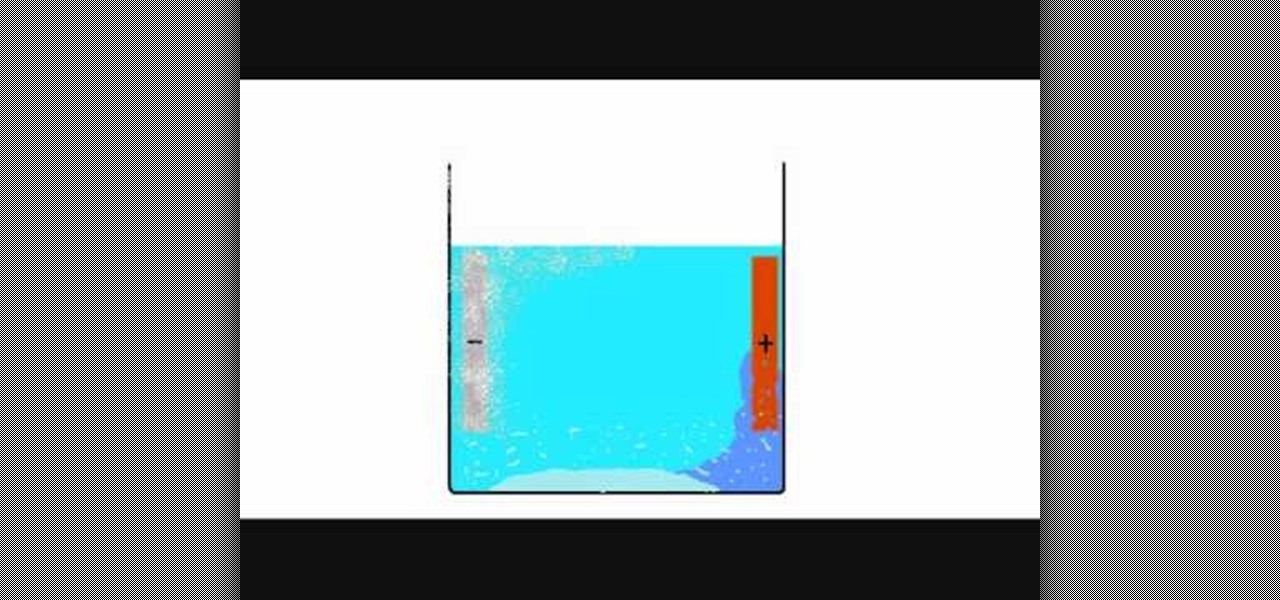
In this home-science how-to, we learn how to synthesize copper hydroxide Cu(OH)2 using copper metal and the electro-chemical approach. For detailed, step-by-step instructions, and to get started making your own copper hydroxide, watch this video guide form YouTube user sciencoking.

Is your microwave full of food and sauce spatter? You can easily remove all sorts of food detritus without using harsh or potentially toxic chemicals - all you need is to microwave a lemon in some water for a few minutes. Cleans easily, and your microwave smells fantastic!
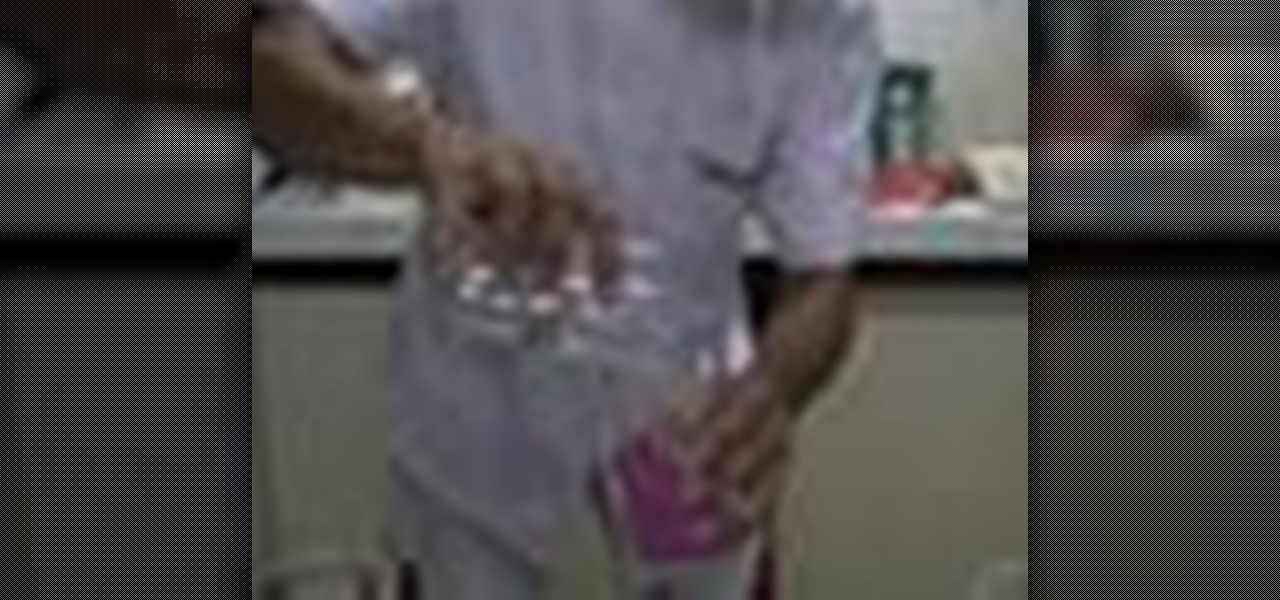
One of the most famous miracles of Jesus is turning water into wine. This process is not easy for the mortal to perform, but it is possible using modern chemistry. Watch this video to learn how to perform a water into wine magic trick with powerful acids which you MUST be careful handling.
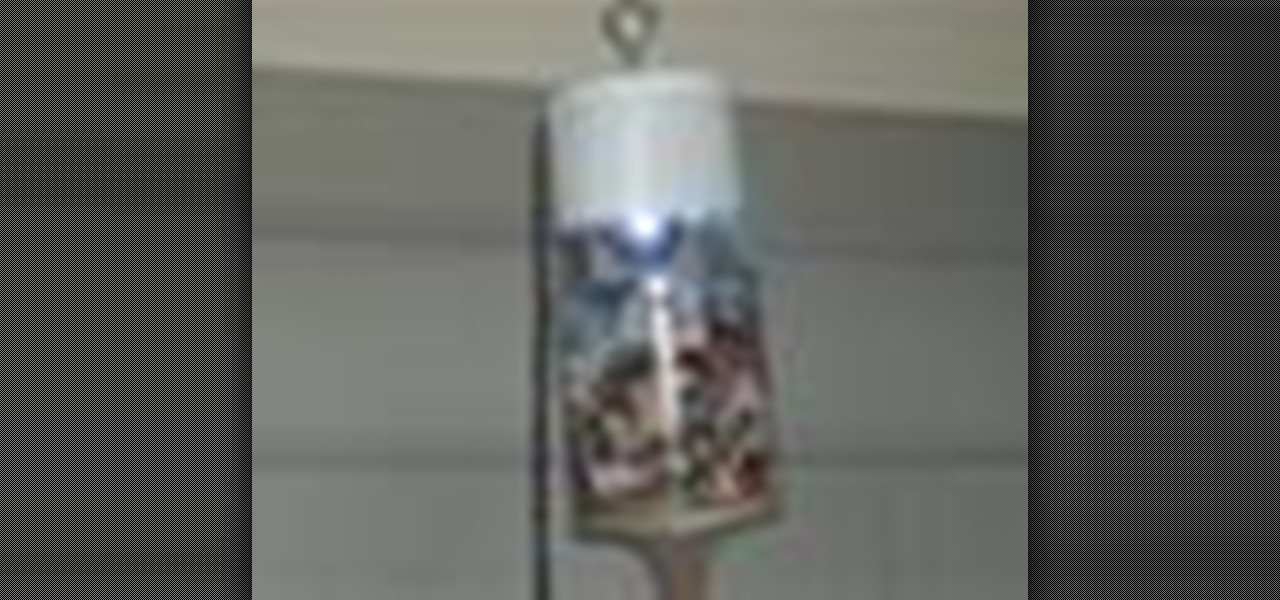
Killing bugs used to be the domain of fancy chemicals that, it turns out, hurt us as much or more than the bugs. If you have a flying pest problem and need a green way to control it, watch this video to learn how to make a DIY wind tunnel trap for your insect nemeses.
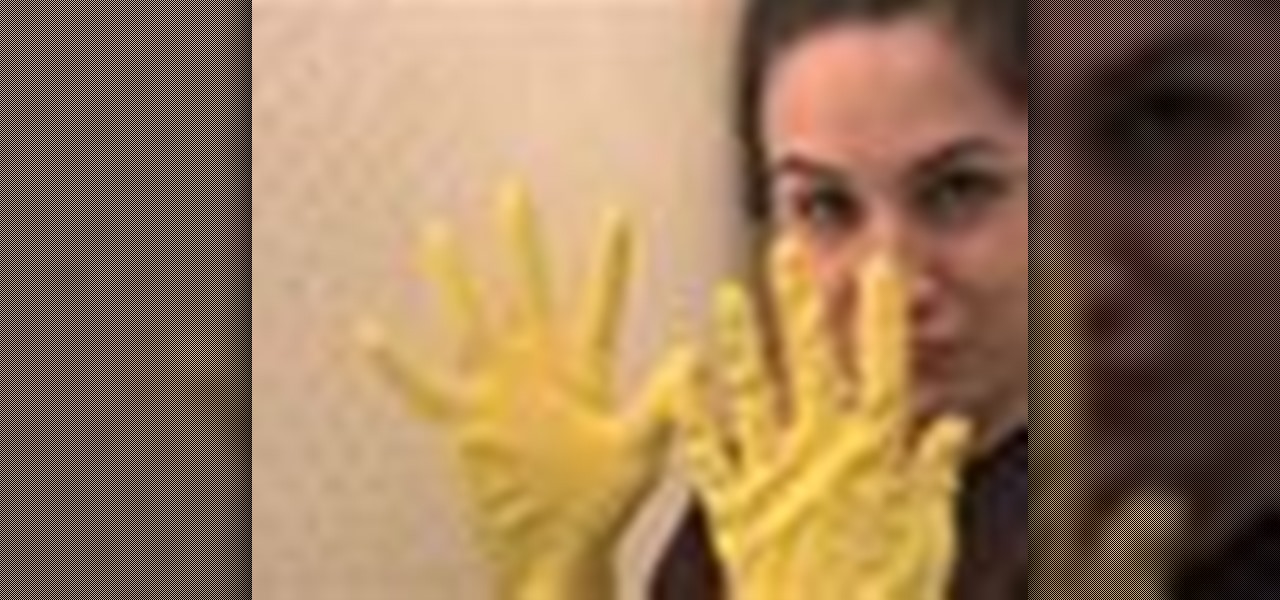
Lime scale is one of the three most common types of dirt to afflict your shower. It is hard to get rid of and prevent, but not impossible, and this video will teach you chow chemicals and hard work can keep your shower beautiful.
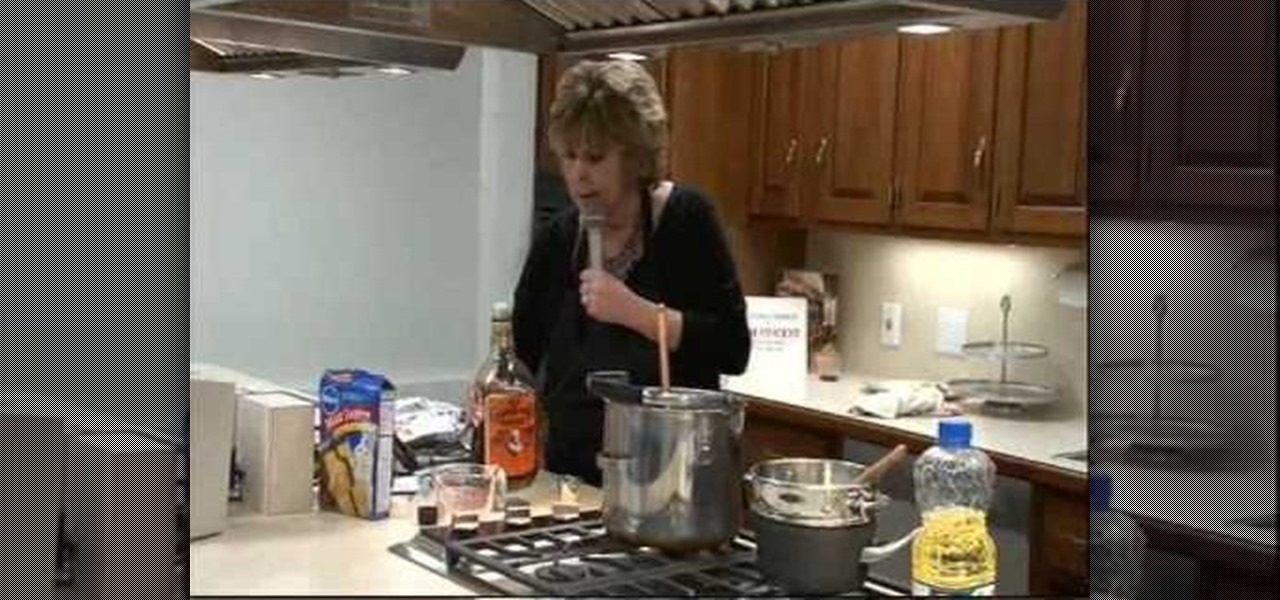
As Peggy from "Married With Children" demonstrated, every woman loves to kick back with a plate of bon bons and a good soap opera. Sure, you can purchase your bon bons from a store, but why ingest all those artificial preservatives and chemicals when you can make your own at home?

Cross processing is an old photography technique where the actual film is developed using the 'wrong' chemicals. It can add a unique color variation, like giving your subject green-tinted skin. It's possible to replicate this cross processing technique using Adobe Photoshop, and this tutorial demonstrates how.

In this next gardening tutorial, you're going to find out how to plant your very own potatoes from scratch. It's a great way to save money and make sure that you a veggie that isn't covered in any sort of chemical.

There are many benefits to growing your own vegetables and fruits. One of the most obvious is the fact you'll be saving money and preventing any harmful chemicals from entering the body. In this tutorial, you'll find out how to grow one of the most commonly eaten foods out there: potatoes. This time, it's not in a box or planter, but instead in a bag. Check it out and enjoy!

Walk right past that pricey salon and head to the grocery store instead. Tame your frizz for less at home! This video will show you how to make a banana hair mask to combat frizz.

The number one culprit for a slow or clogged up water drain is hair. Check out this video tutorial to learn how to open slow or clogged drains with the Drain Claw. The Drain Claw is amazing at removing hair trapped in shower drains, bathtubs, and bath sinks. You don't need chemicals to get rid of all that hair, you just need the Drain Claw.

Adam's tutorial on an Iron Man Arc Reactor Prop.

Check out this instructional science video that demonstrates how to perform the experiment "Matter of Degree." From the Oregon Museum of Science and Industry's teacher curriculum, "No Hassle Messy Science with a Wow", these are chemical reactions that result in changing temperatures. Follow the step by step instructions to witness a temperature change. The "Matter of Degree" is a great experiment for students to perform.

Check out this instructional science video that demonstrates how to perform the experiment "Of Cabbages and Kings." From the Oregon Museum of Science and Industry's teacher curriculum, "No Hassle Messy Science with a Wow", learn about this chemical reaction featuring cabbage juice. This is a great experiment for your students to perform. Follow the simple instructions outlined in this video and do the "Of Cabbages and Kings" science experiment.

Make a great ball toy from chemicals, that are not hard to get. The result, if you follow along with this how-to video, is a very bouncy ball. You will need, ethanol, water glass, rubber gloves, beakers and a popsicle stick. Watch this video toy tutorial and learn how to make your own super bouncy ball.

Allen shows us how to organically fertilize your vegetable garden. Insect and pest control as well as fertilizer can be used to keep a garden safe for the whole family, as well as pets, as well as producing food free of chemicals. Watch this video gardening tutorial and learn how to organically fertilize a garden.

Forget about those chemical store bought flea repellents. This how to video shows you how to make a safe and simple flea repellant for dogs and cats. All you need is lemon, distilled water, and cotton balls. Keep your house and pets flea free with this natural repellent.

Start a fire using water. It is a pretty cool trick. This guy takes a couple of goofy household chemicals and creates a powder that explodes when water touches it.

Lye can cause chemical burns and the fear of getting burned prevents arts enthusiasts from making homemade soap. Watch this video to learn how to safely make lye solution so you can go ahead and unleash the creative child in you.

This is a chemical demonstration of the excitation of sodium atoms in a dill pickle by connecting it to 120 volts. Watch to learn how to electrify a pickle yourself.

This video walks you through the steps of how to do waterless lithography. Waterless lithography is a lithographic process that does not require heavy or expensive presses or too many toxic chemicals. It is based in the idea that water and silicone don't mix.

Once used as solid rocket fuel because the reaction requires no oxygen, sulfur and zinc react vigorously. The reaction with zinc produces flame and a near explosion. Sparks fly and smoke billows in this dramatic chemical demonstration.

This illustrates the reaction had between magnesium and dry ice. It ignites in a chemical reaction between the CO2 & the magnesium.

Indoor gnats, which are also known as fungus gnats, are not only annoying. Their larvae feed on plant stems and roots and can cause considerable damage to seedlings and small plants. Luckily, you can get rid of these obnoxious little pests without using harsh chemicals.

Here is a simple tutorial for creating the ever popular Mentos and Diet Coke chemical reaction. Two techniques for suspending the Mentos prior to release are shown. Use this as inspiration for one of your April Fools Day pranks!

This video explains electricity as the flow of atomic particles called electrons. Animations demonstrate electron flow. Batteries are described as chemical devices designed to create electron flow. Terms covered in video include Volts, current and Amperes

Plants all around us capture sunlight every day and convert it to energy, making them a model of solar energy production. And while the energy they make may serve the needs of a plant, the process isn't efficient enough to generate power on a larger scale. So, scientists from the University of California found a way to treat bacteria with chemicals that turned them into photosynthesis machines, capable of generating products we can convert into food, fuels, and plastics.

Editor's Note: The claims by Vani Hari which were originally detailed in the article below about azodicarbonamide were unscientific in nature. This article has been updated to reflect that and provide more scientific context on the issue.

Hydrazine sulfate has many uses, but most notably, it's been used under the trade name of Sehydrin, a treatment for anorexia, cachexia and some even think cancer. But for we DIY chemists, it's useful for something entirely different— as a substitute for the more dangerous pure liquid hydrazine in chemical reactions. NurdRage shows you how to make it via some hypochlorite and the Ketazine process.

It's a stormy winter night, and you're electricity goes out. You could grab some candles to add a little light to your life, or you could use glow-in-the-dark chemicals for a cool luminescent.

There's a few reasons why you might want to purify chemicals by recrystallization, but the best one could be luminescence glow-in-the-dark dust.

Make a reusable glow stick, glow-in-the-dark-style! Imagine, you'll never have to buy one of those ChemLite's again, because you can reuse this homemade glow stick over and over again. This video tutorial will show you how to make a permanent, reusable glow stick. The materials in this experiment are simple: epoxy resin, straw, and some phosphor powder.

Learn to make sodium metal with this great video tutorial. Be sure to use latex gloves in the process, as the chemicals can be hazardous. This should not be performed by an inexperienced chemist.

Fluorescent dye can be a great addition for decorating around the house for Halloween, especially for a haunted one. Creating your own fluorescent dye is a simple experiment, as long as you've got the proper chemicals and safety gear. Nurd Rage details the chemical process of creating your own fluorescein below.

Want to make boring old colorless water brighten up on command? Well, you can control the color of water with this little magic trick. Actually, it's not really magic, but a classic science experiment known commonly as the iodine clock reaction, which uses the reactions between water and chemicals to instantly colorize water, seemingly by command. You can use different colorless chemicals to produce different colors, and you can even make the color vanish to make the water clear again.

The best go-to method for reducing your risk of infection is to wash your hands. Next time you reach for the soap, here is some news you can use.

Wax is one of those material that you use all of the time that is also nearly impossible to get out of clothes without the right chemicals. Watch this video to learn the steps your need to get wax stains out of clothes.

People used to bring poison into their homes willy-nilly, but now that we realize how bad most household pest-killers and other chemicals are natural ways are becoming more popular. This video will show you how to kill bugs in your home without resorting to poison that could hurt your children or pets.

Check out this video from Chemical Reaction Tutorials (CRTutorials). If you love filmmaking, prop making, editing and everything else that goes along with making movies, then you'll want to see what Adam has to say about teleportation.

Check out this video from Chemical Reaction Tutorials (CRTutorials). If you love filmmaking, prop making, editing and everything else that goes along with making movies, then you'll want to see what Adam has to say about hand effects.










